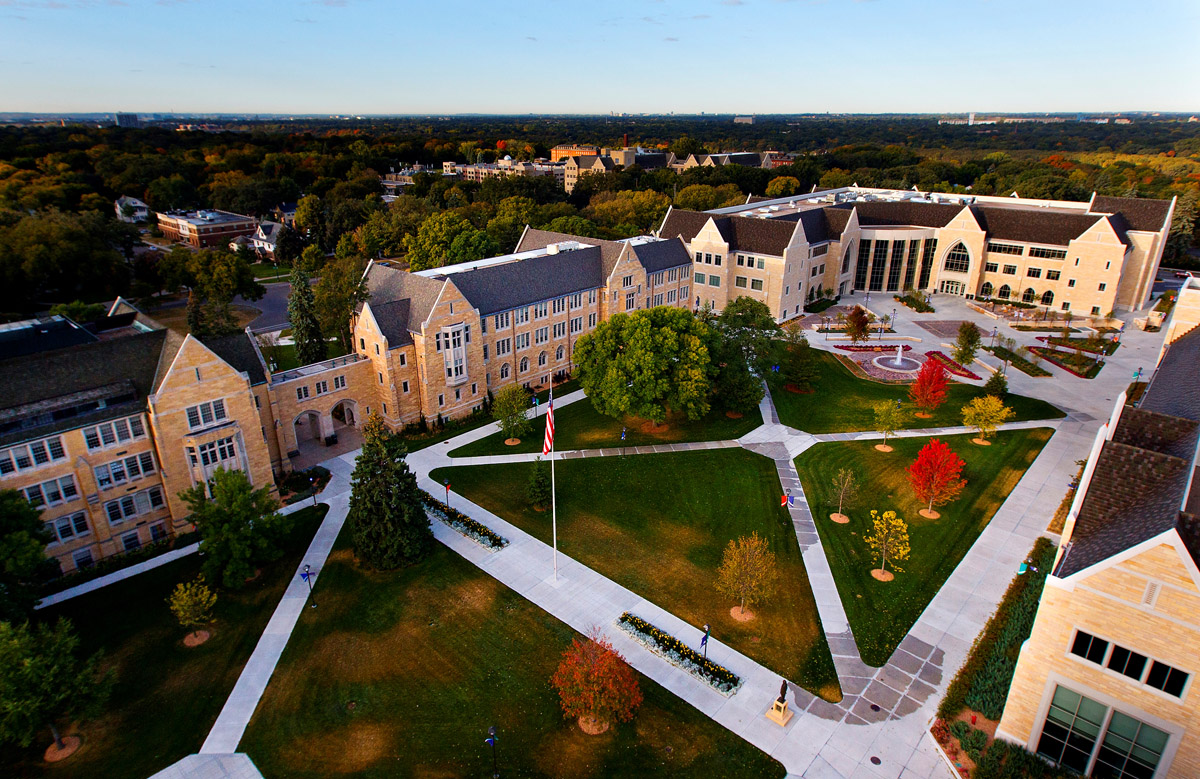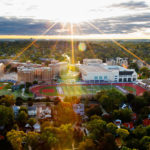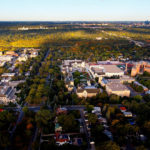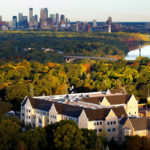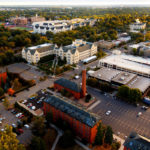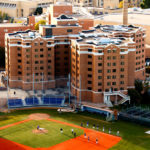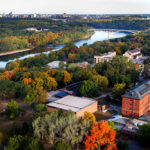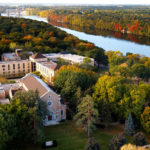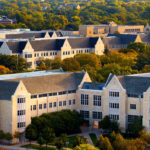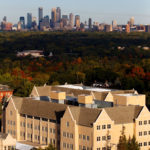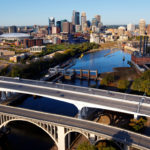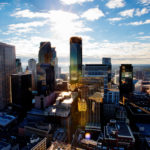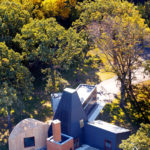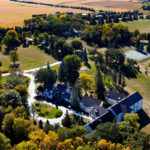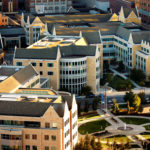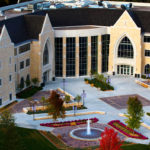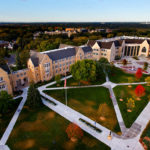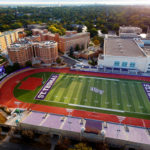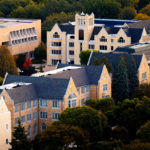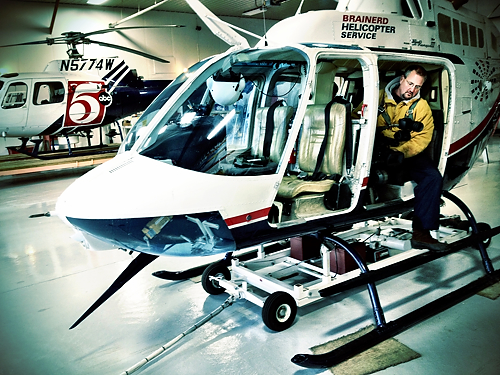
Brad gets strapped into the back seat. Notice how I get the much safer looking seat up front. This is as it should be.
There's something about being a photographer at St. Thomas that feels just a bit like cheating. You work at an institution that is comprised entirely of beautiful architecture surrounding what is essentially an arboretum.
And every few years the place rents you a helicopter.
The last time was in 2006 and since then the campus has changed just a bit. With all the construction completed, it was time to go up again. Which is why, on a still-black September Sunday morning, videographer Brad Jacobsen and I found ourselves at Fleming Field in South St. Paul. Brad, toting a ridiculously heavy gyro-stabilized mount for his camera, had to get to the field 20 minutes before me to let the gyros in the stabilizer spin up. So when I stepped into the hangar, Brad was already getting strapped into the back of the chopper.
When I say "strapped," I really mean it. When we do aerial photos we do so with the doors off of the helicopter. Since my gear is smaller I sit up front, wear a four-point harness, and simply twist at the waist to look out the open side. Brad, on the other hand, sits in the back with his feet on the skid of the helicopter and wears a full-body harness that attaches inside the helicopter.
Reasonably secure inside the chopper, our pilot, the incredibly calm and competent Jimmy Young, ran through his checklists, fired up the engines, and we lifted, doorless, into the morning air.
Ten minutes later we were circling the St. Paul campus in some amazing light.
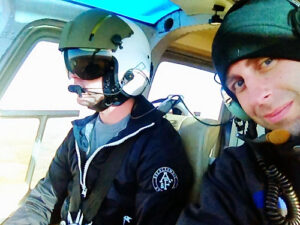
See how Jimmy is looking out the window and not at me horsing around? That's the sign of a good pilot. Actually, this seems to happen a lot to me.
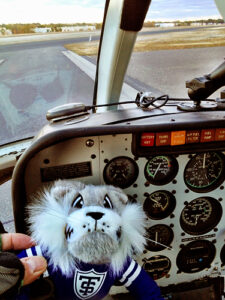
Reports of a small stuffed animal making its way into the cabin for purposes of social media tomfoolery have only recently been confirmed.
Shooting from a helicopter is a bit of a mental balancing act. Thanks to the success of our 2006 shoot there were plenty of people who knew what they wanted from this flight, so in addition to directing the pilot, changing exposure settings to match the light (it changes from sun to shade as you circle the campus), and playing "Operation" with the frame of the chopper (if you take a picture with any part of your hands, head, or camera touching the side of the helicopter, you'll get a blurry photo thanks to all the vibration), I had a mental checklist of all the requests I'd received.
We spent 45 minutes circling St. Paul before heading down the river toward Minneapolis. I'm a sucker for tall buildings, so passing by the skyline as close as we did left me with an experience that still makes me smile.
You can only fly around two sides of the Minneapolis campus thanks to all the skyscrapers, so 20 minutes of work downtown and we headed back to Fleming Field to put the doors on the helicopter and fly to the Gainey Center in Owatonna. We stopped off at the Owatonna airport where Jimmy landed, pulled the doors off, and dropped them in a field next to the taxiway.
After that it was 20 minutes of work over Gainey (being careful not to fly too low and spook the horses), back to the Owatonna airport to put the doors on, and then back to Fleming Field.
Aerial photography is one of the coolest things I get to do as a photographer, but until you get some images into the camera it's also one of the more nerve-wracking. Circling the campus with the muted thump of the rotors breaking through the barrier of your headset, the occasional chatter of air traffic control, and the near constant slap of the camera shutter, you are being given any number of gifts - the light, the place, the opportunity. If you fail, the blame can only be laid at your feet - an indictment of your skill and of the care with which you received those gifts.
And to succeed means more than simply returning with a properly exposed image containing all the buildings people have asked you to shoot. It means showing people something they've never seen before or, perhaps even better, showing them something they've seen a thousand times in a way they've never seen it. That's knowledge, and it's why St. Thomas is here.
I'm grateful it's a place photography can call home.
Read more from Depth of Field.
